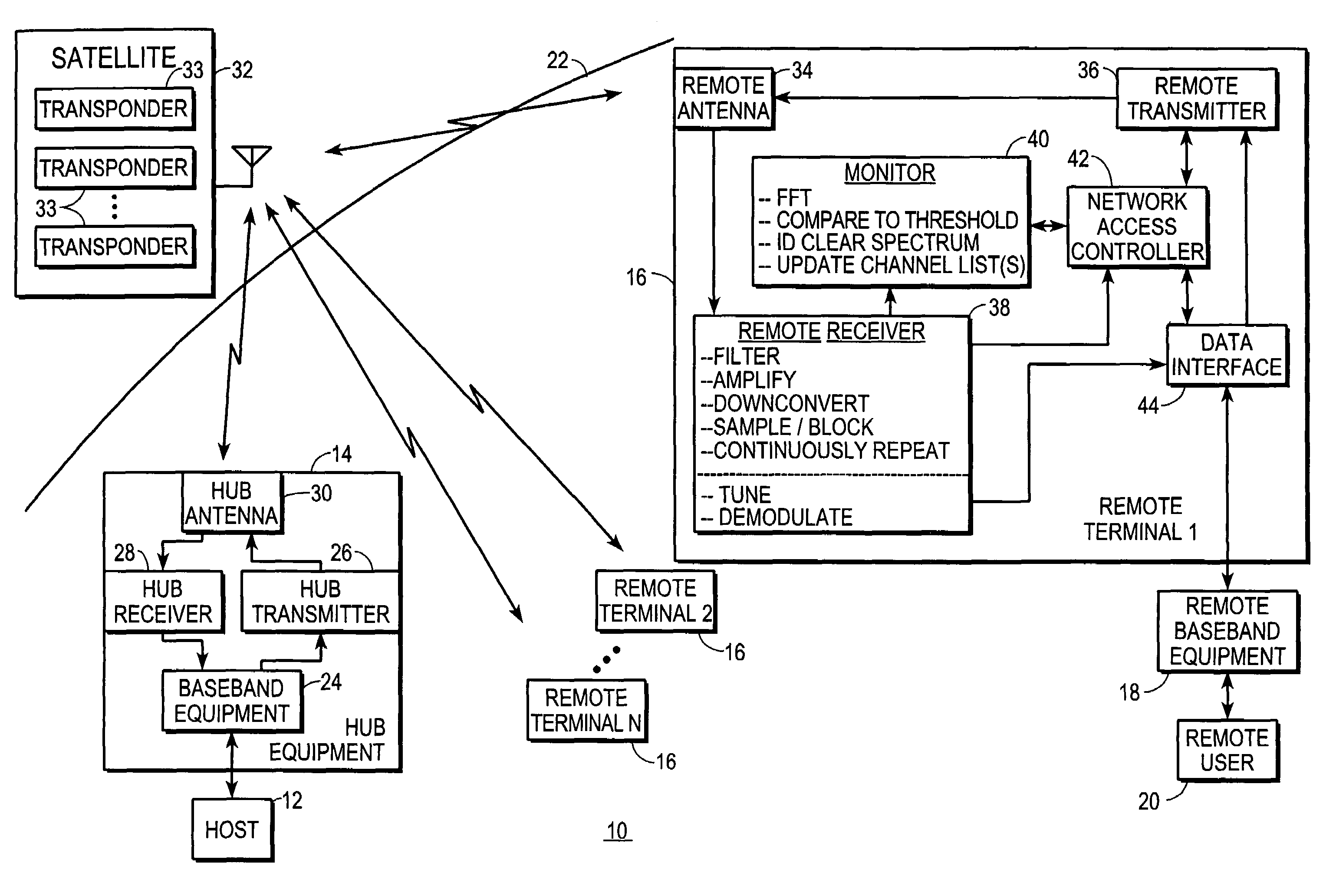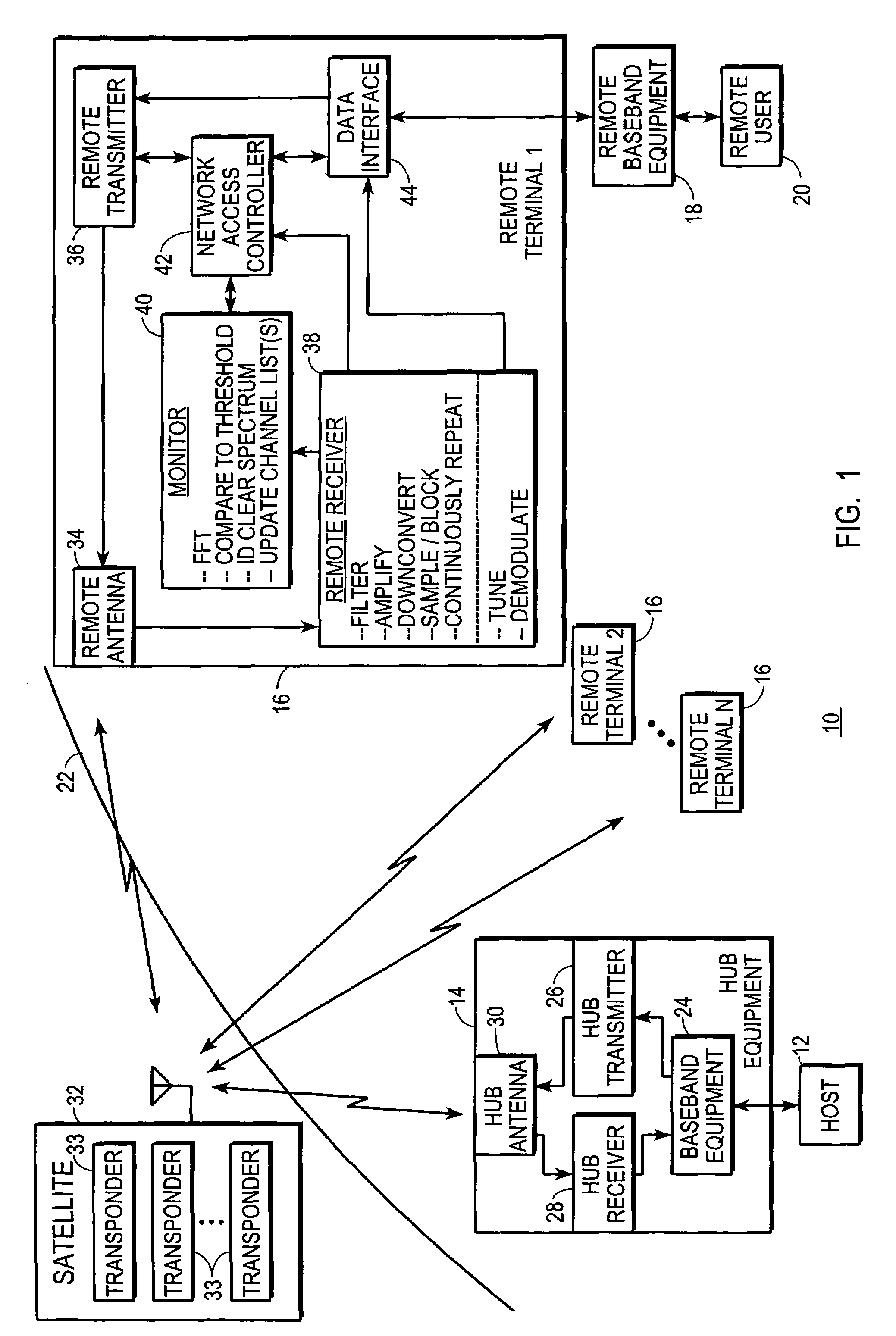System and method for multiple access control in satellite communications system
a satellite communications system and access control technology, applied in the field of satellite communications systems, can solve the problems of high space segment cost, inconvenient operation, and high cost of conventional tdma based networks, and achieve the effects of short set-up time, cost-effective operation, and effective utilization of bandwidth
- Summary
- Abstract
- Description
- Claims
- Application Information
AI Technical Summary
Benefits of technology
Problems solved by technology
Method used
Image
Examples
Embodiment Construction
[0040]FIG. 1 depicts a functional block diagram of a satellite communications system 10 in accordance with one presently preferred embodiment of the invention. This embodiment of the invention is used in applications that employ continuous or long periods of satellite communication, i.e., non-burst mode. This embodiment of the present invention as shown FIG. 1 can be used in applications that call for broadcast (voice or video) messages, isolated area telephone service, circuit restoral or, large file transfer applications, for example.
[0041]System 10 comprises a host 12, a hub equipment package 14, and up to a multiplicity of remote terminals 16. Each remote terminal 16 may be associated with remote baseband equipment 18 at the disposal of a remote user 20. Host 12, hub 14, remote terminals 16, and remote baseband equipment 18 would typically be terrestrially located. In other words, these items would typically be located on or near the surface of the Earth 22.
[0042]Host 12 is the ...
PUM
 Login to View More
Login to View More Abstract
Description
Claims
Application Information
 Login to View More
Login to View More - R&D
- Intellectual Property
- Life Sciences
- Materials
- Tech Scout
- Unparalleled Data Quality
- Higher Quality Content
- 60% Fewer Hallucinations
Browse by: Latest US Patents, China's latest patents, Technical Efficacy Thesaurus, Application Domain, Technology Topic, Popular Technical Reports.
© 2025 PatSnap. All rights reserved.Legal|Privacy policy|Modern Slavery Act Transparency Statement|Sitemap|About US| Contact US: help@patsnap.com



